Recent Advances and Applications of External Cavity-QCLs towards Hyperspectral Imaging for Standoff Detection and Real-Time Spectroscopic Sensing of Chemicals
Abstract
:1. Introduction
2. EC-QCL with MOEMS Scanning Grating
2.1. Setup of the MOEMS EC-QCL
2.2. Determination of the Spectral Linewidth and Wavelength Reproducibility
2.3. Realtime Absorption Measurements Using MOEMS EC-QCL
3. Case Studies for the Use of EC-QCL in Spectroscopic Sensing
3.1. Inline-Monitoring of Chemical Reactions
3.2. Imaging MIR Laser Backscattering Spectroscopy for the Stand-off Detection of Residues of Explosives
3.3. Assessing Food Quality by QCL-Based MIR Backscattering Spectroscopy: Initial Results
4. Conclusions
Acknowledgments
Author Contributions
Conflicts of Interest
References
- Ostendorf, R.; Butschek, L.; Merten, A.; Grahmann, J.; Jarvis, J.; Hugger, S.; Fuchs, F.; Wagner, J. Real-time spectroscopic sensing using a widely tunable external cavity-QCL with MOEMS diffraction grating. Proc. SPIE 2016, 9755, 975507–975508. [Google Scholar]
- Hugger, S.; Fuchs, F.; Jarvis, J.-P.; Yang, Q.; Rattunde, M.; Ostendorf, R.; Schilling, C.; Driad, R.; Bronner, W.; Aidam, R.; et al. Quantum Cascade Laser based active hyperspectral imaging for standoff detection of chemicals on surfaces. SPIE Proc. 2016, 9755, 97550A–97550A-11. [Google Scholar]
- Faist, J. Quantum Cascade Lasers; Oxford University Press: Oxford, UK, 2013. [Google Scholar]
- Capasso, F. High-performance midinfrared quantum cascade lasers. Opt. Eng. 2010, 49, 111102. [Google Scholar] [CrossRef]
- Razeghi, M.; Bai, Y.; Slivken, S.; Darvish, S.R. High-performance InP-based midinfrared quantum cascade lasers at Northwestern University. Opt. Eng. 2010, 49, 111103. [Google Scholar] [CrossRef]
- Wörle, K.; Seichter, F.; Wilk, A.; Armacost, C.; Day, T.; Godejohann, M.; Wachter, U.; Vogt, J.; Radermacher, P.; Mizaikoff, B. Breath analysis with broadly tunable quantum cascade lasers. Anal. Chem. 2013, 85, 2697–2702. [Google Scholar] [CrossRef] [PubMed]
- Beskers, T.F.; Brandstetter, M.; Kuligowski, J.; Quintás, G.; Wilhelm, M.; Lendl, B. High performance liquid chromatography with mid-infrared detection based on a broadly tunable quantum cascade laser. Analyst 2014, 139, 2057–2064. [Google Scholar] [CrossRef] [PubMed]
- Lambrecht, A.; Pfeifer, M.; Konz, W.; Herbst, J.; Axtmann, F. Broadband spectroscopy with external cavity quantum cascade lasers beyond conventional absorption measurements. Analyst 2014, 139, 2070–2078. [Google Scholar] [CrossRef] [PubMed]
- Phillips, M.C.; Taubman, M.S.; Bernacki, B.E.; Cannon, B.D.; Stahl, R.D.; Schiffern, J.T.; Myers, T.L. Real-time trace gas sensing of fluorocarbons using a swept-wavelength external cavity quantum cascade laser. Analyst 2014, 139, 2047–2056. [Google Scholar] [CrossRef] [PubMed]
- Hugi, A.; Terazzi, R.; Bonetti, Y.; Wittmann, A.; Fischer, M.; Beck, M.; Faist, J.; Gini, E. External cavity quantum cascade laser tunable from 7.6 to 11.4 μm. Appl. Phys. Lett. 2009, 95, 061103. [Google Scholar] [CrossRef]
- Daylight Solutions. Available online: http://www.daylightsolutions.com/assets/005/5453.pdf (accessed on 31 March 2016).
- Block Engineering. Available online: http://www.blockeng.com/products/lasertune.pdf (accessed on 31 March 2016).
- Fuchs, F.; Hugger, S.; Yang, Q.; Kinzer, M.; Bronner, W.; Lösch, R.; Aidam, R.; Degreif, K.; Konz, W.; Rademacher, S.; et al. Standoff Detection of Explosives and High Sensitive Detection of Chemicals in Drinking Water with Quantum Cascade Lasers. In Lasers, Sources, and Related Photonic Devices; Optical Society of America: Miami, FL, USA, 2012; p. LM2B.6. [Google Scholar]
- Wagner, J.; Ostendorf, R.; Grahmann, J.; Merten, A.; Hugger, S.; Jarvis, J.-P.; Fuchs, F.; Boskovic, D.; Schenk, H. Widely tunable quantum cascade lasers for spectroscopic sensing. In SPIE OPTO; Razeghi, M., Tournié, E., Brown, G.J., Eds.; International Society for Optics and Photonics: Baltimore, MD, USA, 2015; p. 937012. [Google Scholar]
- Hinkov, B.; Fuchs, F.; Yang, Q.K.; Kaster, J.M.; Bronner, W.; Aidam, R.; Köhler, K.; Wagner, J. Time-resolved spectral characteristics of external-cavity quantum cascade lasers and their application to stand-off detection of explosives. Appl. Phys. B Lasers Opt. 2010, 100, 253–260. [Google Scholar] [CrossRef]
- Fuchs, F.; Hugger, S.; Kinzer, M.; Aidam, R.; Bronner, W.; Lösch, R.; Yang, Q.; Degreif, K.; Schnürer, F. Imaging standoff detection of explosives using widely tunable midinfrared quantum cascade lasers. Opt. Eng. 2010, 49, 111127. [Google Scholar] [CrossRef]
- Fuchs, F.; Hugger, S.; Kinzer, M.; Yang, Q.; Bronner, W.; Aidam, R.; Degreif, K.; Rademacher, S.; Schnürer, F.; Schweikert, W. Standoff detection of explosives with broad band tunable external cavity quantum cascade lasers. SPIE Proc. 2012, 8268, 82681N–82681N-9. [Google Scholar]
- Fuchs, F.; Hugger, S.; Yang, Q.; Jarvis, J.-P.; Kinzer, M.; Ostendorf, R.; Schilling, C.; Driad, R.; Bronner, W.; Bächle, A.; et al. The Wonder of Nanotechnology: Present and Future of Optoelectronics Quantum Devices and Their Applications for Environment, Health, Security and Energy; SPIE Press Book: Bellingham, WA, USA, 2013. [Google Scholar]
- Daylight Solutions. Available online: http://www.daylightsolutions.com/assets/001/5023.pdf (accessed on 31 March 2016).
- Tsai, T.; Wysocki, G. External-cavity quantum cascade lasers with fast wavelength scanning. Appl. Phys. B 2010, 100, 243–251. [Google Scholar] [CrossRef]
- Hugger, S.; Fuchs, F.; Jarvis, J.; Kinzer, M.; Yang, Q.K.; Driad, R.; Aidam, R.; Wagner, J. Broadband-tunable external-cavity quantum cascade lasers for spectroscopy and stand-off detection. Proc. SPIE 2013, 8631, 645–672. [Google Scholar]
- Yang, Q.; Fuchs, F.; Wagner, J. Quantum cascade lasers (QCL) for active hyperspectral imaging. Adv. Opt. Technol. 2014, 3, 141–150. [Google Scholar] [CrossRef]
- Lyakh, A.; Barron-Jimenez, R.; Dunayevskiy, I.; Go, R.; Patel, C.K.N. External cavity quantum cascade lasers with ultra rapid acousto-optic tuning. Appl. Phys. Lett. 2015, 106, 141101. [Google Scholar] [CrossRef]
- Grahmann, J.; Merten, A.; Ostendorf, R.; Fontenot, M.; Bleh, D.; Schenk, H.; Wagner, H.-J. Tunable External Cavity Quantum Cascade Lasers (EC-QCL): An application field for MOEMS based scanning gratings. Proc. SPIE 2014, 8977, 897708. [Google Scholar]
- Alcaráz, M.R.; Schwaighofer, A.; Kristament, C.; Ramer, G.; Brandstetter, M.; Goicoechea, H.; Lendl, B. External-Cavity Quantum Cascade Laser Spectroscopy for Mid-IR Transmission Measurements of Proteins in Aqueous Solution. Anal. Chem. 2015, 87, 6980–6987. [Google Scholar] [CrossRef] [PubMed]
- Palmer, C.; Loewen, E. Diffraction Grating Handbook; Newport Corporation: New York, NY, USA, 2005; Volume 6. [Google Scholar]
- Yang, Q.; Lösch, R.; Bronner, W.; Hugger, S.; Fuchs, F.; Aidam, R.; Wagner, J. High-peak-power strain-compensated GaInAs/AlInAs quantum cascade lasers (λ = 4.6 μm) based on a slightly diagonal active region design. Appl. Phys. Lett. 2008, 93, 251110. [Google Scholar] [CrossRef]
- Wysocki, G.; Lewicki, R.; Curl, R.F.; Tittel, F.K.; Diehl, L.; Capasso, F.; Troccoli, M.; Hofler, G.; Bour, D.; Corzine, S.; et al. Widely tunable mode-hop free external cavity quantum cascade lasers for high resolution spectroscopy and chemical sensing. Appl. Phys. B 2008, 92, 305–311. [Google Scholar] [CrossRef]
- Bula, W.P.; Verboom, W.; Reinhoudt, D.N.; Gardeniers, H.J.G.E. Multichannel quench-flow microreactor chip for parallel reaction monitoring. Lab Chip 2007, 7, 1717–1722. [Google Scholar] [CrossRef] [PubMed]
- Karabudak, E.; Mojet, B.L.; Schlautmann, S.; Mul, G.; Gardeniers, H.J.G.E. Attenuated Total Reflection-Infrared Nanofluidic Chip with 71 nL Detection Volume for in Situ Spectroscopic Analysis of Chemical Reaction Intermediates. Anal. Chem. 2012, 84, 3132–3137. [Google Scholar] [CrossRef] [PubMed]
- Jarvis, J.; Fuchs, F.; Hugger, S.; Blattmann, V.; Yang, K.Q.; Ostendorf, R.; Bronner, W.; Driad, R.; Aidam, R.; Wagner, J.; et al. Trace Detection of Explosive Substances in Hyperspectral Imagery. In Proceedings of the 9th Future Security Research Conference, Fraunhofer Verlag, Berlin, 16–18 September 2014; pp. 241–247.
- Jarvis, J.; Fuchs, F.; Hugger, S.; Blattmann, V.; Yang, K.Q.; Ostendorf, R.; Bronner, W.; Driad, R.; Aidam, R.; Wagner, J.; et al. Hyperspectral Image Analyses for Standoff Detection of Explosives. In Proceedings of the 8th Future Security Research Conference, Fraunhofer Verlag, Berlin, 17–19 September 2013; pp. 205–214.
- Fuchs, F.; Hugger, S.; Jarvis, J.; Blattmann, V.; Kinzer, M.; Yang, Q.K.; Ostendorf, R.; Bronner, W.; Driad, R.; Aidam, R.; et al. Infrared hyperspectral standoff detection of explosives. Proc. SPIE 2013, 8710, 87100I–87100I–8. [Google Scholar]
- Angelo, A.J.; Ory, R.L. Lipid degradation during seed deterioration. Phytopathology 1983, 73, 315–317. [Google Scholar] [CrossRef]
- Sztajer, H.; Maliszewska, I.; Wieczorek, J. Production of exogenous lipases by bacteria, fungi, and actinomycetes. Enzyme Microb. Technol. 1988, 10, 497. [Google Scholar] [CrossRef]
- Hinkov, B.; Fuchs, F.; Kaster, J.M.; Yang, Q.; Bronner, W.; Aidam, R.; Köhler, K. Broad band tunable quantum cascade lasers for stand-off detection of explosives. Proc. SPIE 2009, 7484. [Google Scholar] [CrossRef]


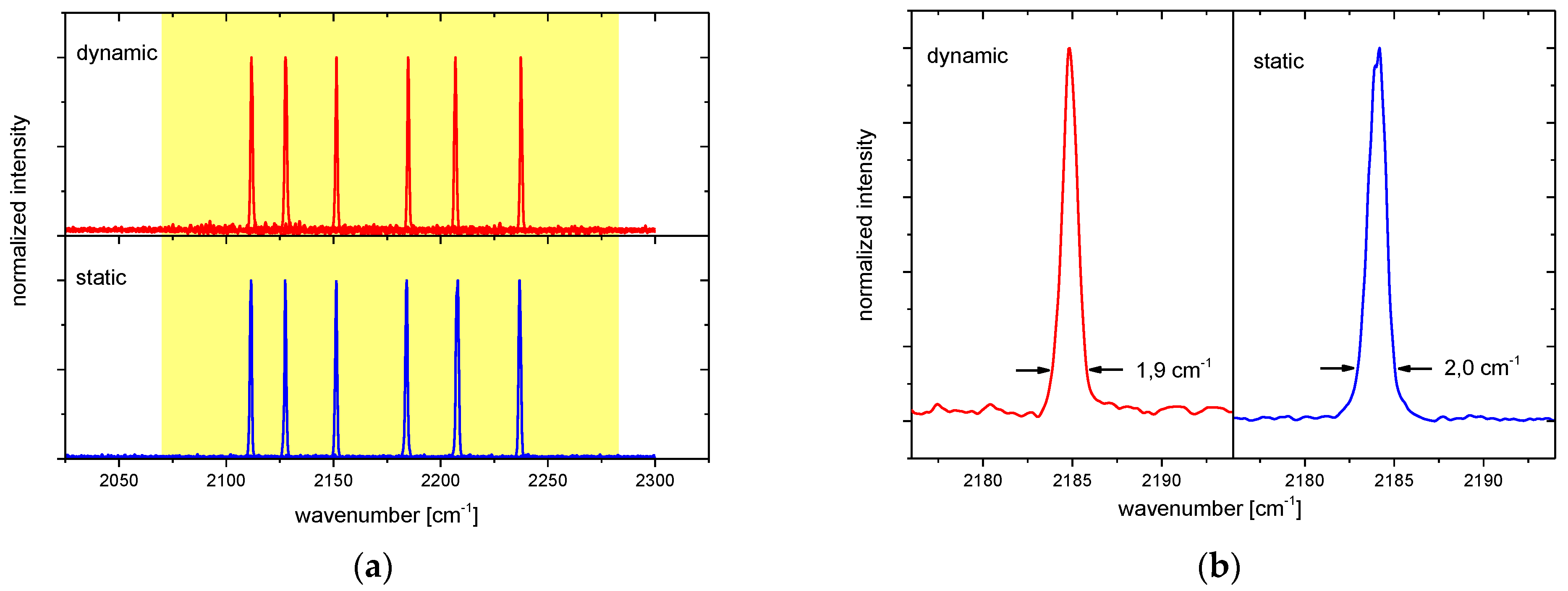

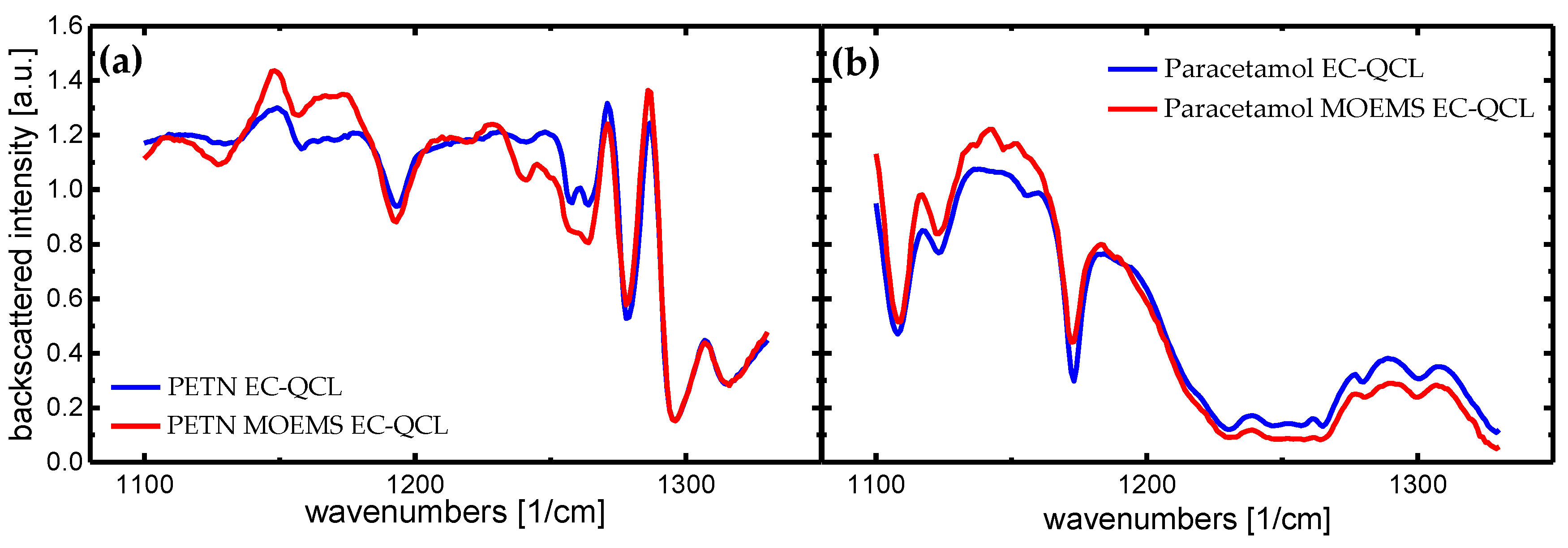
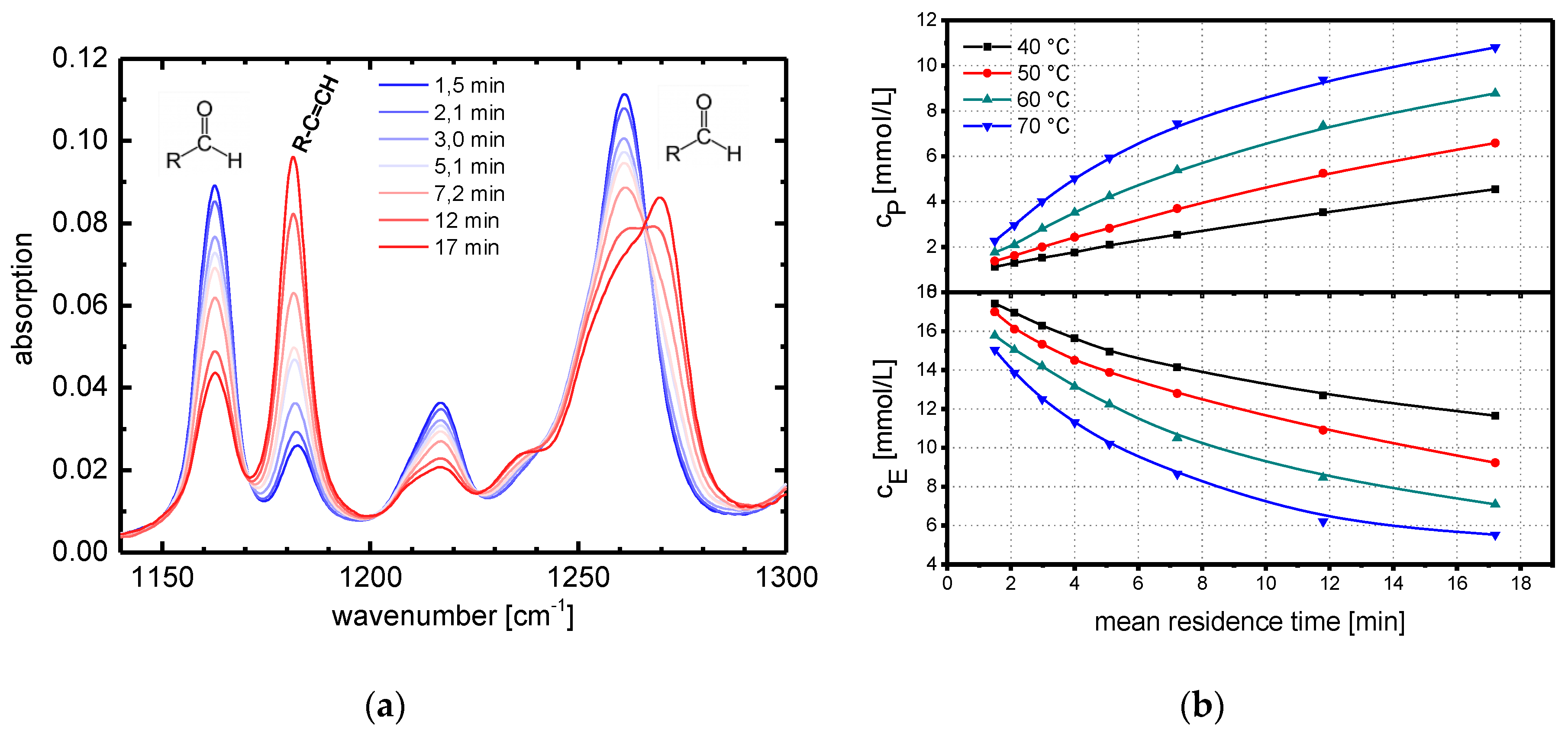
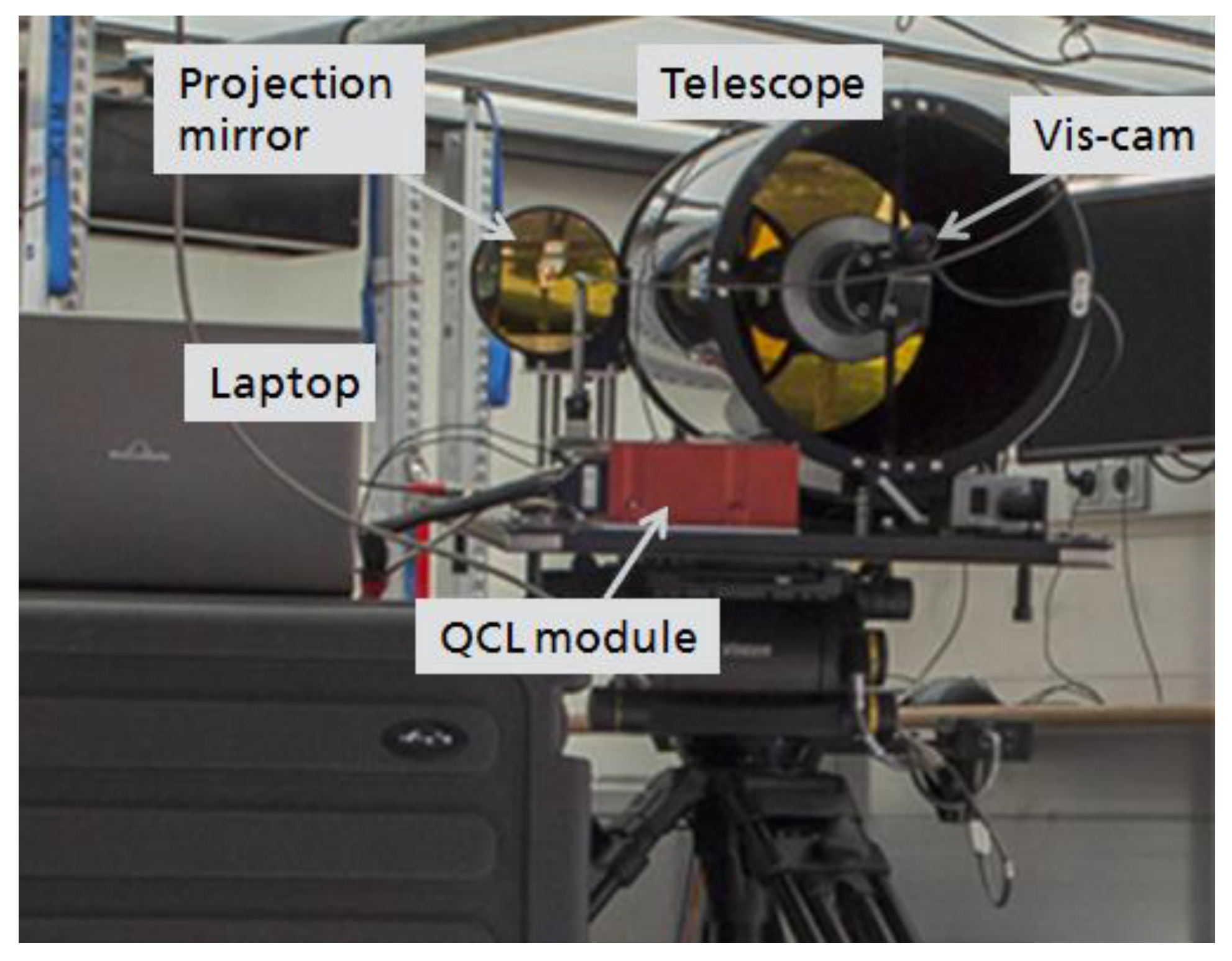
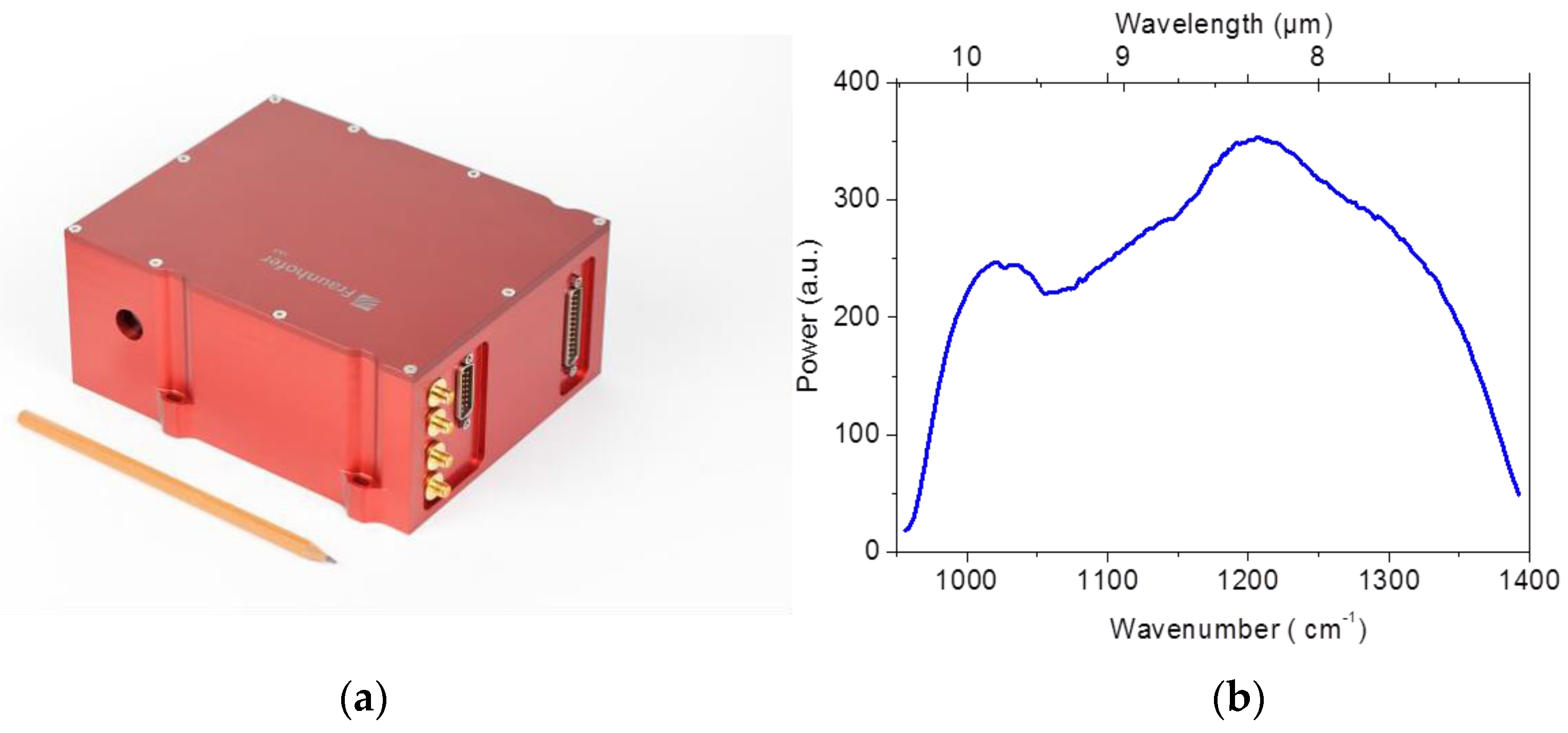
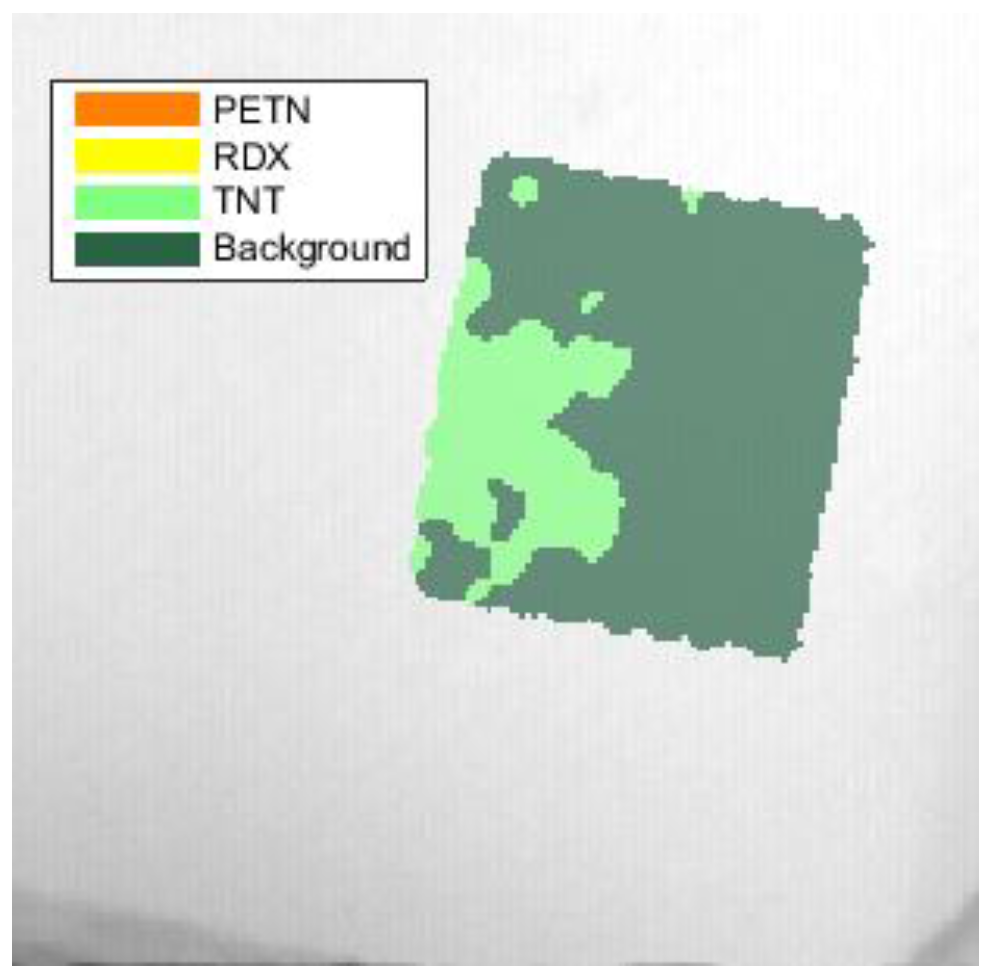
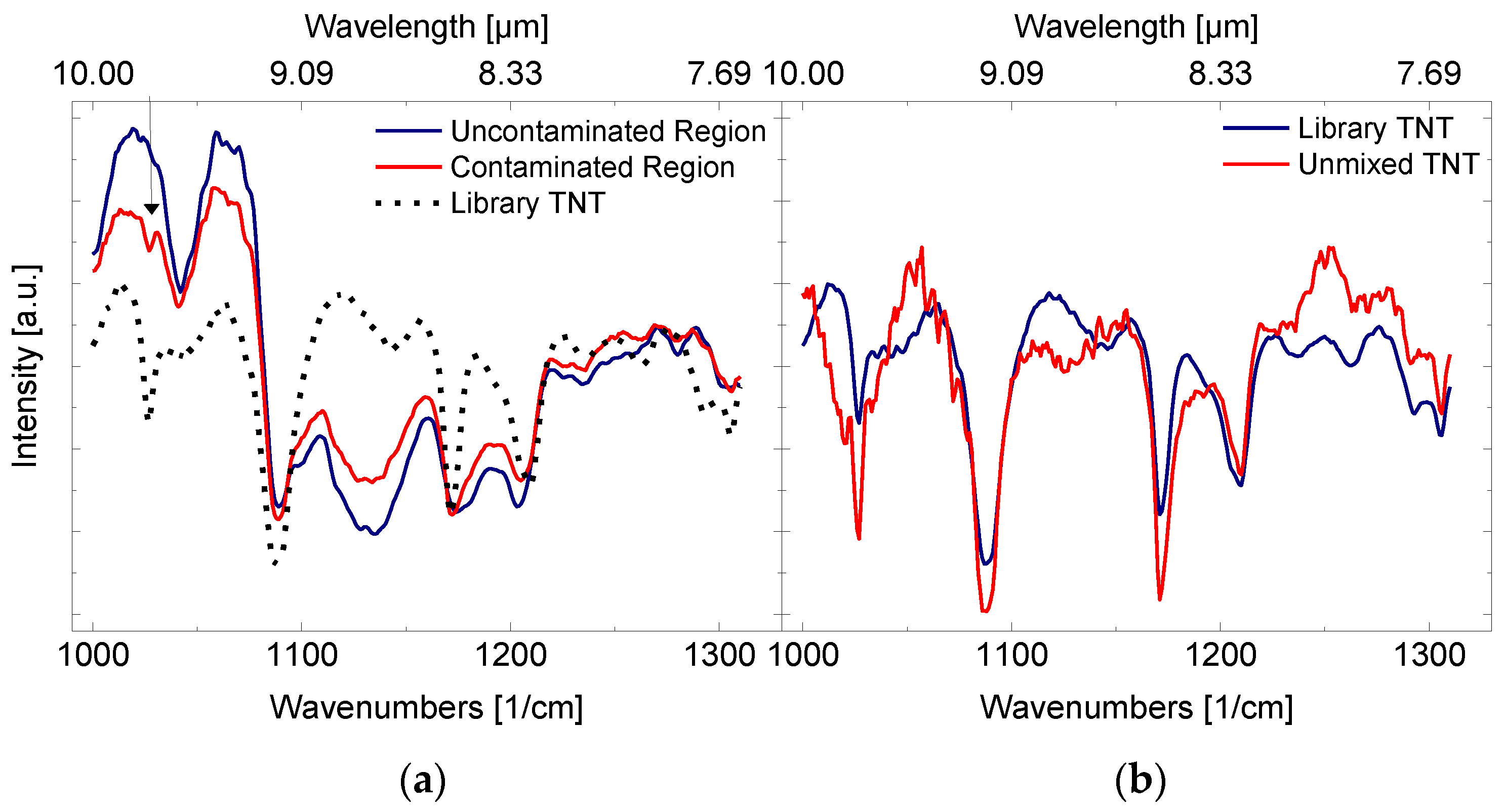
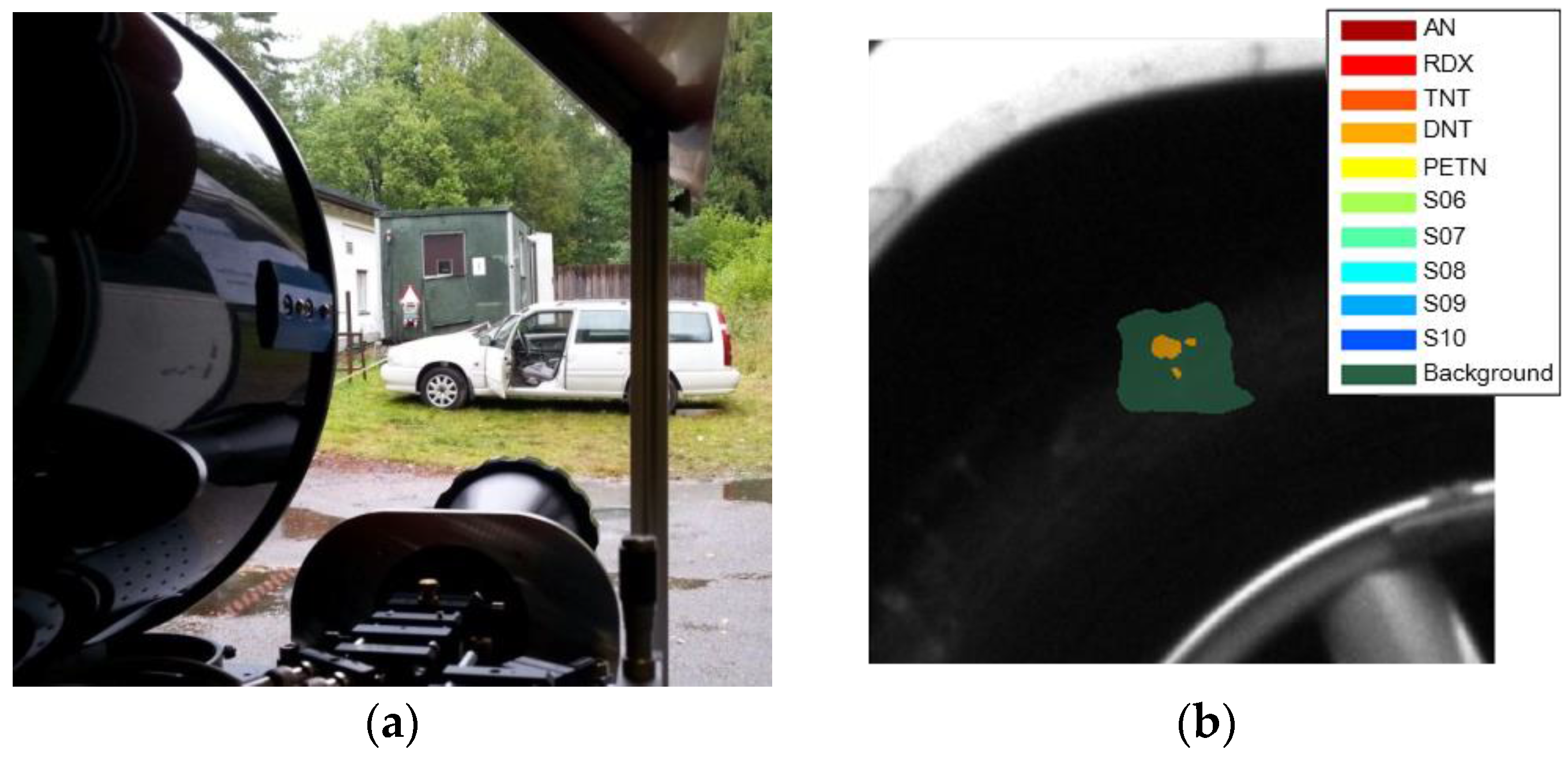
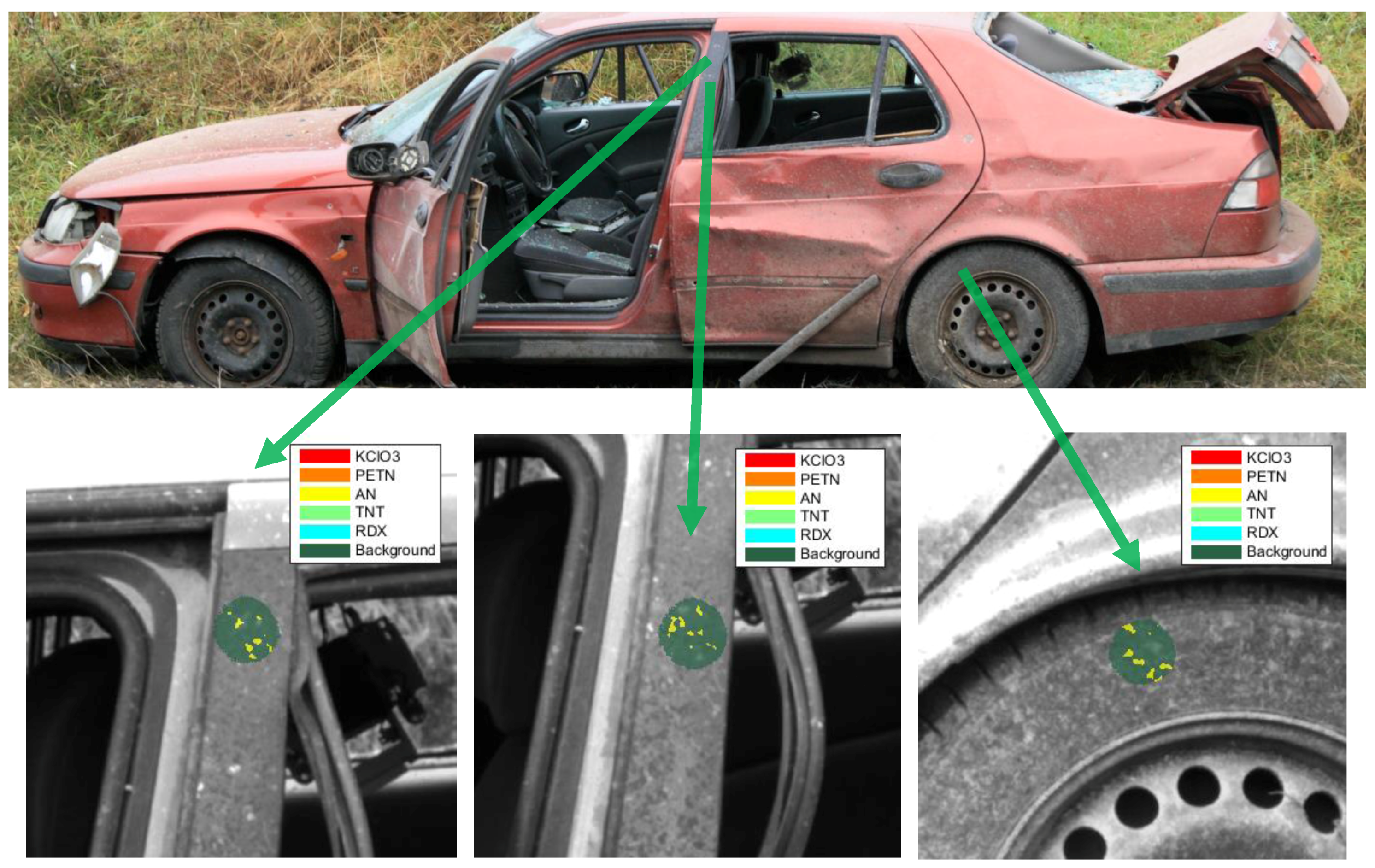
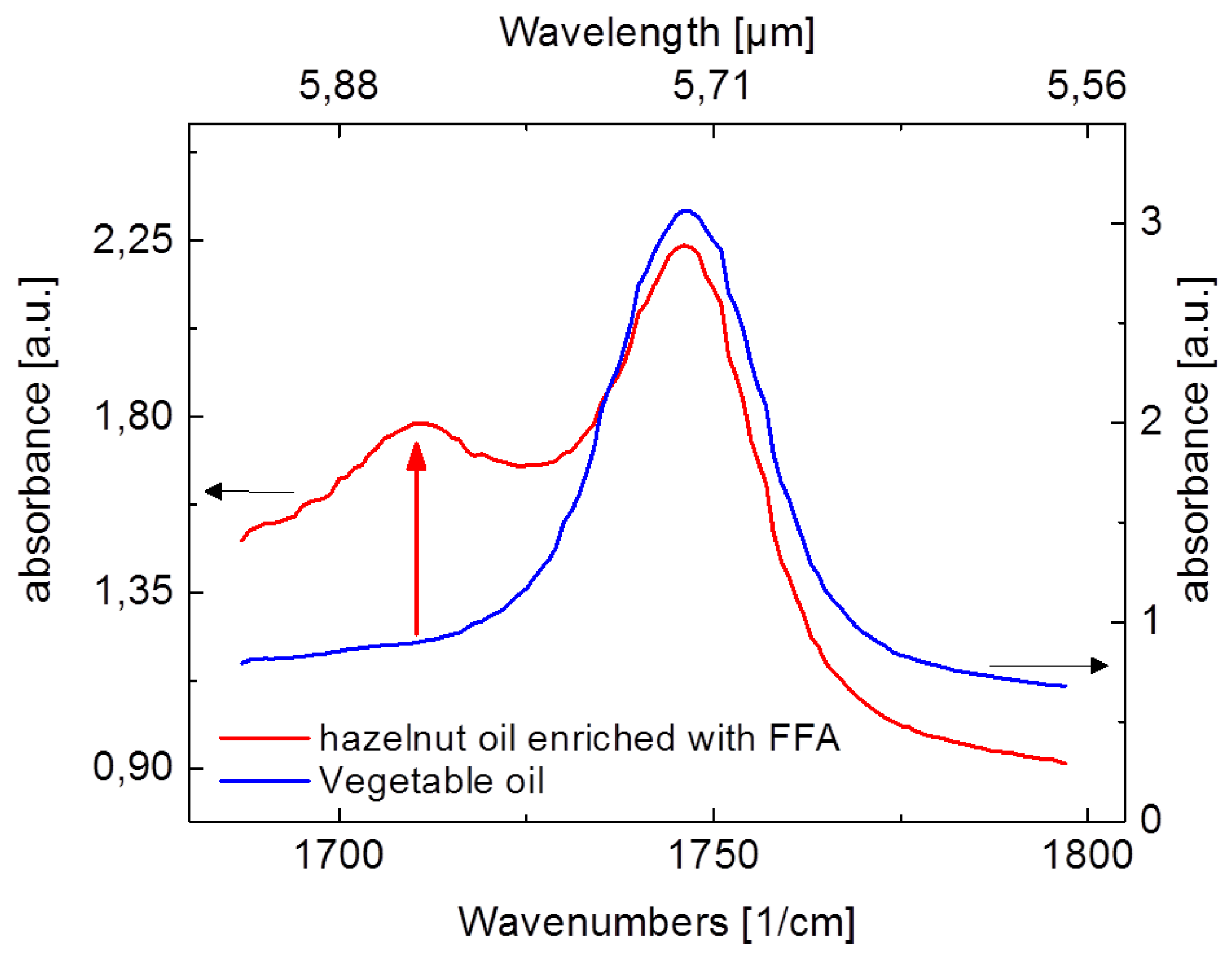
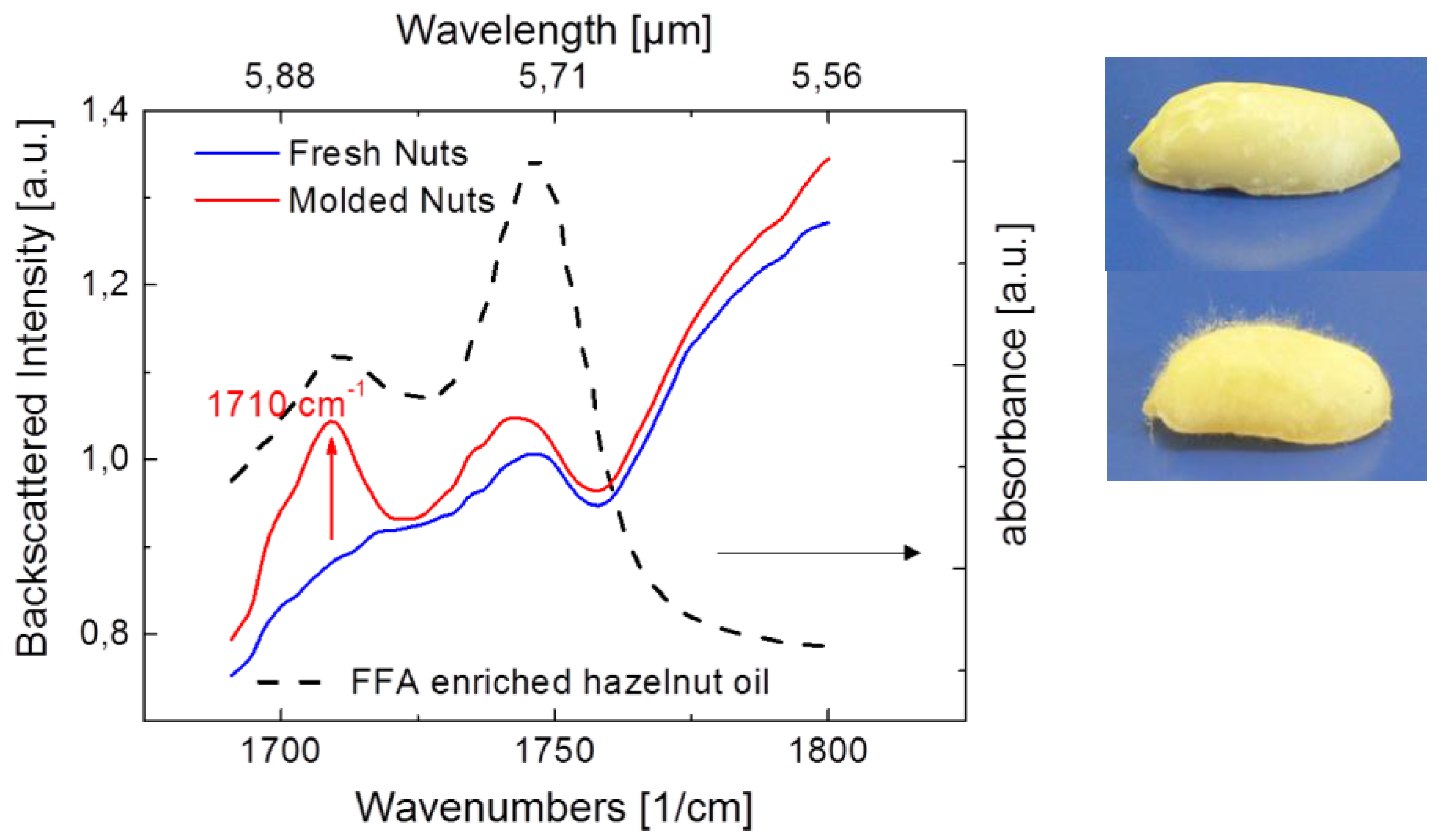
© 2016 by the authors; licensee MDPI, Basel, Switzerland. This article is an open access article distributed under the terms and conditions of the Creative Commons Attribution (CC-BY) license (http://creativecommons.org/licenses/by/4.0/).
Share and Cite
Ostendorf, R.; Butschek, L.; Hugger, S.; Fuchs, F.; Yang, Q.; Jarvis, J.; Schilling, C.; Rattunde, M.; Merten, A.; Grahmann, J.; et al. Recent Advances and Applications of External Cavity-QCLs towards Hyperspectral Imaging for Standoff Detection and Real-Time Spectroscopic Sensing of Chemicals. Photonics 2016, 3, 28. https://doi.org/10.3390/photonics3020028
Ostendorf R, Butschek L, Hugger S, Fuchs F, Yang Q, Jarvis J, Schilling C, Rattunde M, Merten A, Grahmann J, et al. Recent Advances and Applications of External Cavity-QCLs towards Hyperspectral Imaging for Standoff Detection and Real-Time Spectroscopic Sensing of Chemicals. Photonics. 2016; 3(2):28. https://doi.org/10.3390/photonics3020028
Chicago/Turabian StyleOstendorf, Ralf, Lorenz Butschek, Stefan Hugger, Frank Fuchs, Quankui Yang, Jan Jarvis, Christian Schilling, Marcel Rattunde, André Merten, Jan Grahmann, and et al. 2016. "Recent Advances and Applications of External Cavity-QCLs towards Hyperspectral Imaging for Standoff Detection and Real-Time Spectroscopic Sensing of Chemicals" Photonics 3, no. 2: 28. https://doi.org/10.3390/photonics3020028
APA StyleOstendorf, R., Butschek, L., Hugger, S., Fuchs, F., Yang, Q., Jarvis, J., Schilling, C., Rattunde, M., Merten, A., Grahmann, J., Boskovic, D., Tybussek, T., Rieblinger, K., & Wagner, J. (2016). Recent Advances and Applications of External Cavity-QCLs towards Hyperspectral Imaging for Standoff Detection and Real-Time Spectroscopic Sensing of Chemicals. Photonics, 3(2), 28. https://doi.org/10.3390/photonics3020028




